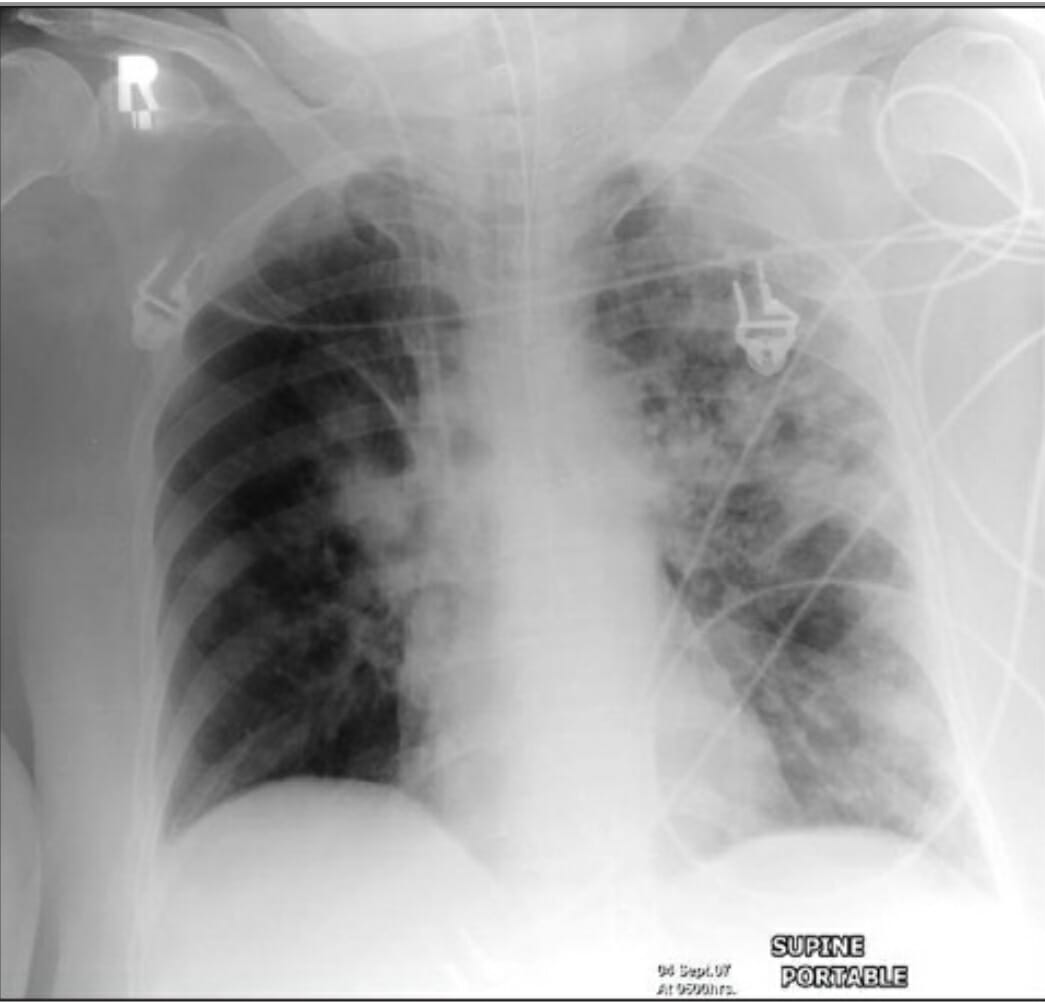Playlist
Show Playlist
Hide Playlist
Pneumonia and Pulmonary Infections: Management
-
Emergency Medicine Bord Pneumonia and Pulmonary Infections.pdf
-
Download Lecture Overview
00:01 Let’s also take a moment to think about treatment. 00:04 And when we’re thinking about treatment we’re gonna talk first about outpatient treatments, about a patient who we see who has a pneumonia who could likely go home. 00:13 They have stable vital signs, their respiratory rate is okay, they’re otherwise feeling okay. 00:18 So uncomplicated pneumonia can be treated with azithromycin, clarithromycin, or possibly doxycline. 00:24 Now these are just a few of the choices. 00:26 There are a lot of other choices out there that you can potentially use, but these are the most common things that are used initially. 00:33 Now if someone has co-morbidities, if they have a history of diabetes, potentially if they have underlying lung disease, you wanna think about using a fluoroquinolone. 00:42 So something like levofloxacin, or moxifloxacin may be good initial choices there. 00:47 You also wanna think about using Augmentin, possibly, plus azithromycin. 00:54 So Augmentin, amoxicillin-clavulanate, can add on additional coverage plus the azithromycin that you wanna make sure that you kind of keep there. 01:02 Now, let’s say your patient needs to be admitted to the hospital for various reasons. 01:07 For community acquired pneumonia… so community acquired pneumonia someone who has recently been hospitalized or doesn’t have regular contact with the health care system. 01:16 So community acquired pneumonia is someone who comes from their house to the emergency department, not someone who comes from a nursing home or comes from another facility or is recently been in a hospital. 01:27 For those patients, ceftriaxone plus azithromycin is the key first treatment or possibly flouroquinolones. 01:36 Flouroquinolones primarily being levofloxacin. 01:39 Now for health care associated pneumonia, patients who have recently been hospitalized, patients who are coming from nursing homes, patients who have a lot of contact with the health care systems or sometimes I put dialysis patients into this grouping. 01:53 For those patients, you wanna think about giving broader coverage and when you’re giving your broader coverage you’re covering for additional things. 02:01 You’re covering for pseudomonas, you’re covering for staph aureus, and primarily, one thing about staph aureus you’re covering for MRSA, Methicillin-resistant staph aureus. 02:12 So for those patients, you’re using cefepime or piperacillin/tazobactam plus vancomycin. 02:20 So you wanna sure that you’re doing cefepime or piperacillin/tazobactam plus vancomycin. 02:25 Now, I wanna take a moment also just to think about a pregnant patient who comes in who has concerning symptoms for pneumonia. 02:33 Now it’s important to know that the prognosis for viral pneumonia and pregnant patients is worse and patients who are pregnant who have or get viral processes in pneumonia have higher rates of miscarriage and potentially, higher rates of intubation and hospitalization. 02:49 Patients who are diagnosed with varicella or respiratory symptoms should always get a chest x-ray and a pulse ox in the emergency department and same thing goes for patients who are diagnosed with influenza in the emergency department. 03:02 You always wanna make sure that you have a very low threshold for treating these patients appropriately for these conditions. 03:09 And also, that you have a low threshold or potentially even admitting them to the hospital because we know that they can get worse very, very quickly. 03:18 So the low thresholds and always keep in mind the pregnancy status for patients who are coming in with viral symptoms or infectious symptoms.
About the Lecture
The lecture Pneumonia and Pulmonary Infections: Management by Sharon Bord, MD is from the course Respiratory Emergencies.
Included Quiz Questions
What antibiotics or class of antibiotics are considered to be the first-line treatment in patients with uncomplicated pneumonia in an outpatient setting and not needing hospitalization?
- Azithromycin OR Clarithyromycin OR Doxycycline OR Beta-lactam
- Fluoroquinolones
- Penicillins
- Cephalosporins
- Sulfonamides
In patients with health care-associated pneumonia, which cephalosporin is initially included in the antibiotic coverage regimen?
- Cefepime
- Ceftriaxone
- Cefuroxime
- Cefaclor
- Cefazolin
Customer reviews
5,0 of 5 stars
| 5 Stars |
|
5 |
| 4 Stars |
|
0 |
| 3 Stars |
|
0 |
| 2 Stars |
|
0 |
| 1 Star |
|
0 |





